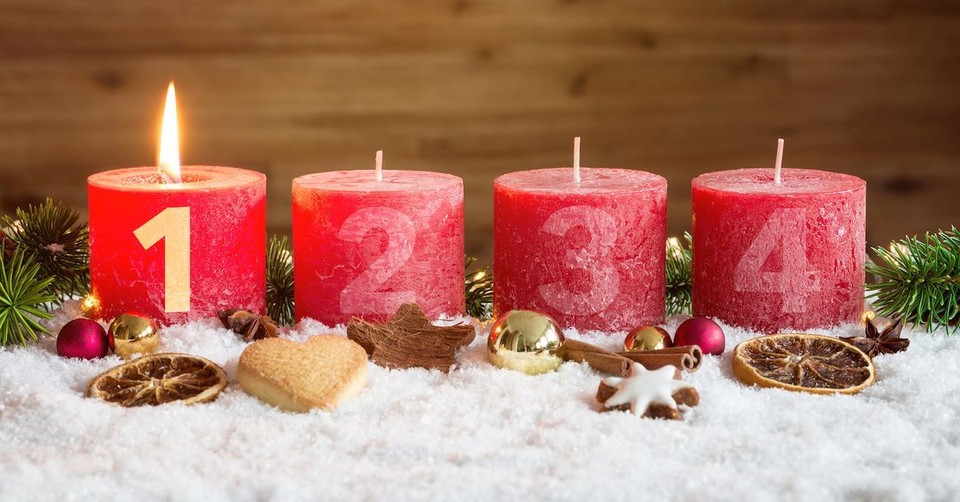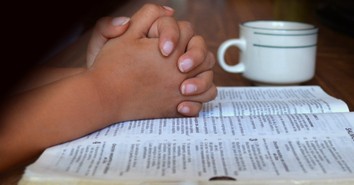Why Is Advent Relevant to Christmas Worship?

The calendar flips to November, Halloween is a distant memory, Thanksgiving is ignored, and the world seems to focus on Christmas overnight. My inbox is flooded with Black Friday specials, holiday Craft Fairs, invitations to festive events, and family gatherings. All to celebrate the upcoming season.
Advent is a time of reflection and worship, preparing our hearts and minds as we celebrate the birth of our Savior. I look forward to the annual Advent devotional from one of my favorite ministries as the yuletide season approaches. Each year the pages overflow with encouraging verses ushering us into a season of worship and celebration.
While my family didn't participate in any Advent calendars growing up, I was familiar with some offering a seasonal Scripture or perhaps a sweet treat. But, I was completely thrown off when a few years back, I saw an Advent calendar that held a different cocktail mix for each day counting down to Christmas. Not that there is anything inherently wrong with a box of drink mixers, but did they have a place in Advent celebrations?
I then realized that while I’d spent years celebrating and participating in the events of Advent, I didn’t understand its meaning for Christmas worship. If perhaps you, too, are on a quest to understand why we celebrate Advent, join me as we explore why Advent is relevant to Christmas worship.
The History of Advent
As believers, we purposefully take time out of our day to remember, reflect, and respond to the upcoming celebration of the birth of Jesus Christ. The literal meaning of the word Advent is arrival, and that’s what we celebrate, preparing for the coming of Christ. I recently purchased an Advent kit from one of my favorite parenting resources, and I loved how they introduced Advent: “Advent is an invitation to pause. Now is the season to reflect on all the ways God is at work and admire His perfect gift of Jesus.”
Unlike the celebration of Christ’s resurrection, Easter, which we tie to Passover, Advent doesn’t have an exact date for its origination. Throughout church history, Advent has prepared the heart and mind to celebrate the greatest gift ever given, salvation! Eventually, Advent transitioned to focus on the second coming of Jesus rather than his birth and life on earth.
Advent began to look more like our current celebration of the season during the middle ages. Many historians agree that the timing of Advent coincided with the “fix dating of Christmas day as December 25th.” It wasn’t until the 5th and 6th centuries that we found church sermon series around Advent, focusing on the first and second coming of Christ. This two-fold celebration is practiced through most evangelic churches, a remembrance of Christ’s birth, life, death, resurrection, and a hope-filled anticipation of Christ's return when all things will be made new.
Celebrating Advent
The Advent season consists of the last four Sundays leading up to Christmas. The official commencement of Advent is on the fourth Sunday before Christmas and ends on Christmas Eve. For many western churches, the celebration of Advent pairs with the traditional Christmas festivities. Churches will incorporate red and green in decorating sanctuaries or hanging the greens alongside the conventional colors of purple and pink. One of the more common practices in the celebration of Advent is incorporating live greenery in decorating the sanctuary and church members’ homes. Green is the color of life; specifically for Advent, it represents eternal life through Christ.
Churches display circular wreaths, representing God’s eternal love, with the greenery symbolizing eternal life. Within the wreath are four colored candles (the colors differ by denomination) and one white candle, representing Christ, the world's Light. Each week, a different candle is lit, each with a different meaning. The first candle lit represents hope or expectation, the second candle faith, the third candle joy, and the fourth candle peace. Not all churches have the fifth candle, the Christ candle, which is lit on Christmas Day and stands for light and purity. This last candle sits in the middle of the wreath reminding us that Christ should be in the center of our lives and the truth that he is the Light of the World.
While most protestant churches adhere to the above Advent candle representations, other denominations have alternative meanings for the candles. The first candle stands for the Messiah; the second is Bethlehem, the third is for the Shepherds, and the last is Angel’s candle.
Typical corporate worship will consist of hymns and praise worship that focus on the birth of Christ, along with Scripture readings highlighting the promises and prophecies of Jesus’ identity and outlining his purpose for coming to earth. Sermons and Scriptures during the Advent season are typically found in the Old Testament and are rich with powerful prophecies that point listeners to the Promised One. This season, the prophets remind us, along with the early New Testament writings, that God is Mighty, Jesus is the Prince of Peace (Isaiah 9:6-7), he is the Light of the World, Emmanuel, and the Promised One, our Savior.
Is Celebrating Advent Relevant to Christmas Worship?
Like everything else in the Christian faith, the sacred can quickly turn into the secular. There is nothing inherently wrong with incorporating Advent celebrations into our Christmas worship. While the Bible doesn’t specifically speak about Advent, it does encourage believers to remember the truth of the gospel, give thanks in all circumstances, be filled with the hope of Christ’s return, and joyfully sing praise and shout words of adoration for our King. (Psalm 89:1-4).
Whether you incorporate this seasonal celebration is a matter of personal conviction (Romans 14:5-6). We believers must stay vigilant to keep Christ at the center of our Christmas celebrations. It’s a struggle not to get distracted by the bright lights, shiny toys, and the hustle and bustle of a worldly Christmas. So, if reading a verse each day in December keeps your heart focused on the reason for the season, then, by all means, indulge. If an Advent calendar prompts your family to take care of the widows and orphans (James 1:27) and drop to your knees in prayer and adoration for the beautiful gift of God’s Son, grab a calendar today!
Having special services, lighting candles in remembrance, and reading seasonal devotions are all excellent avenues to prepare His room this holiday season. Should we engage in Advent, and other festivities of the season, let us be on guard to celebrate the Creator and not the created, giving God the proper glory—not a tradition, a calendar, or our church’s liturgy. Enjoy the resources of Advent; may we use them as tools to drive us deeper into worship and remind us that the greatest gift isn’t found under a tree ( Isaiah 11:1-10).
Photo Credit: ©GettyImages/A-Basler

She lives in Upstate South Carolina with her husband and three young girls, where she serves as director of women's ministries at her church. Her passion is teaching the Bible to women, equipping them to live with an eternal perspective. Invite Laura to speak at your next event or learn more: www.LauraRBailey.com Originally published November 23, 2022.





